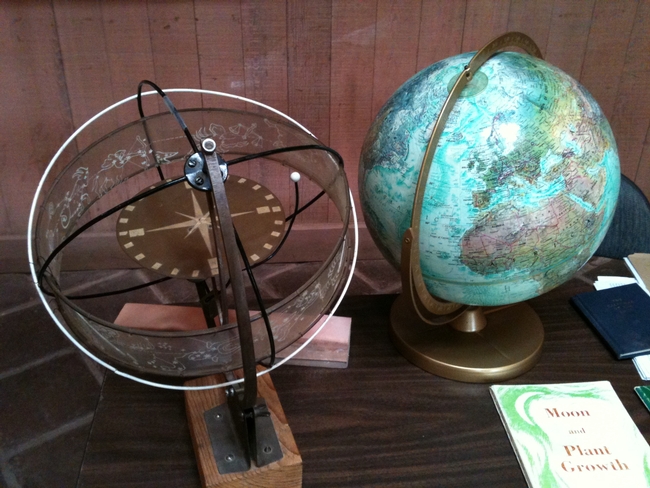- Author: Betty Homer
Disclaimer: This article does not express the views held or advocated by UCCE or its affiliates with regard to biodynamic gardening or farming. It only seeks to introduce the concept of biodynamics to readers as another alternative system of sustainable gardening.
On the recommendation of another Master Gardener, I enrolled in an 8-month course at the Rudolf Steiner College in Fair Oaks, California, in my quest to learn more about different systems and methods of organic gardening. Last month’s lecture was on “Cosmic Rhythms, Planting Calendars.” Although I have not quite made up my mind about the efficacy of this planting system, it was/is nevertheless interesting to learn a new way (at least new to me) of backyard gardening.
One of the beliefs held by biodynamic practitioners, is that planetary/intergalactic events somehow relate to/have practical effects on plants on Earth. For instance, one of the lecturers at the seminar asserted that certain planets such as Venus and Mercury, directly impact the plants belonging to the rose and lily families, respectively, because the geocentric orbits of those planets correspond with the shape and appearance of plants belonging to those families. Although this assertion may or may not be true, the concept of inter-relatedness between celestial and terrestrial events, is both appealing and beautiful.
Planting according to cosmic rhythms is a very complex process, as many factors (i.e., the perceived location of the sun and moon, position of the planets and constellations/stars, the equinoxes, etc.) must be taken into consideration in designing a planting schedule and what tasks to do at a particular hour and on a specific day. While one can create his/her own calendar, the Stella Natura calendar is one of several calendars upon which biodynamic gardeners rely (be forewarned that biodynamic calendars may be a bit daunting to read for the beginner, as they are filled with all sorts of symbols representing where certain planets are believed to be positioned in the zodiac, the phases of the moon, and what conjunctions and oppositions exist as between the moon and the planets). Although inconclusive, some biodynamic practitioners claim and have documented that they have experienced a better, healthier crop yield when planting according to a biodynamic calendar. It is interesting to note, however, that one of the lecturers at the seminar stated that planting according to a biodynamic calendar is very difficult, if not impossible, on a working farm due to scale and the economic realities of operating a farm (i.e., margins being razor-thin). So will planting according to a biodynamic calendar give you better yields? As the lecturers at the seminar suggested, consider experimenting and decide for yourselves.


- Author: Betty Homer
Disclaimer: This article does not express the views held or advocated by UCCE or its affiliates with regard to biodynamic gardening or farming. It only seeks to introduce the concept of biodynamics to readers as another alternative system of sustainable gardening.
For all of you gardening enthusiasts (which I assume all of you are, since you are reading this blog), it is likely that at some point, you have come across the term “biodynamic” gardening or farming.
Biodynamic gardening/farming is usually regarded as one of the earliest organized systems of organic gardening, emphasizing the interrelationships between soil, plant and livestock management (i.e., the garden or farm is regarded as an organism). The foundation for biodynamic gardening or farming arises from a series of lectures given in 1924 by the Austrian philosopher, Rudolf Steiner, to farmers seeking his assistance. Perhaps the defining feature of biodynamic gardening/agriculture and what people find most intriguing, is the use of what is known as “preparations,” (of which there are nine (9), divided between field and compost preparations) which generally consist of manure and/or specific flowers/herbs fermented in a vessel such as a cow horn or the bladder of a red deer/elk, as applicable. The preparations are typically diluted with water, stirred in an exacting manner for a specific period of time, and then sprayed onto a field or compost to stimulate plant growth, as appropriate, and microbial activity. Although these preparations sound esoteric and inaccessible to the average person, people seeking to incorporate biodynamic methods in their garden, may purchase preparations from biodynamic trade organizations and/or other biodynamic gardeners and farmers.
The popularity of biodynamics has gained steam in the mainstream, as many wineries, both local (some even in Napa and Sonoma Counties!) and abroad, have adopted such practices.
For further information on biodynamic gardening or farming, please feel free to visit https://attra.ncat.org/attra-pub/summaries/summary.php?pub=290 or google the term, “biodynamic gardening,” “biodynamic farming,” or “biodynamic agriculture.”



